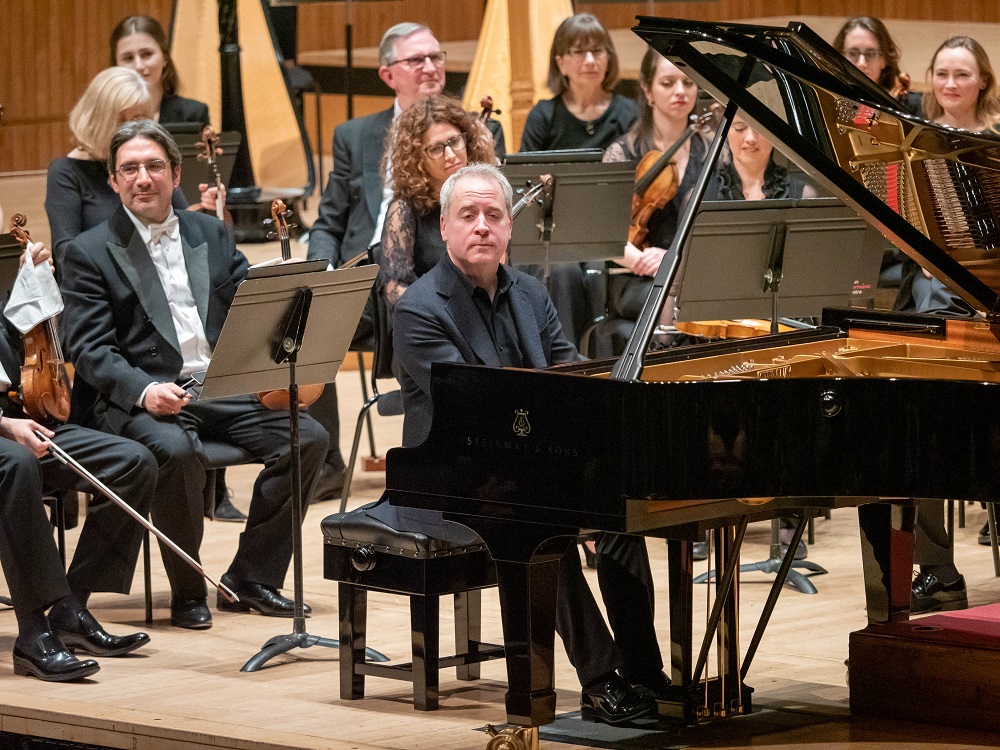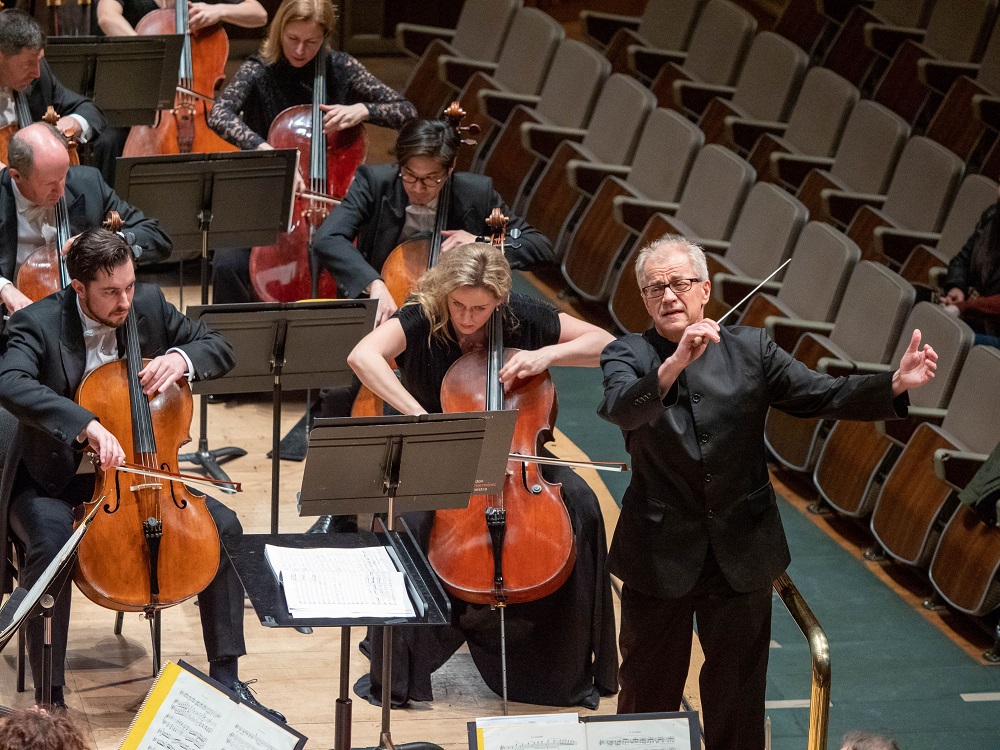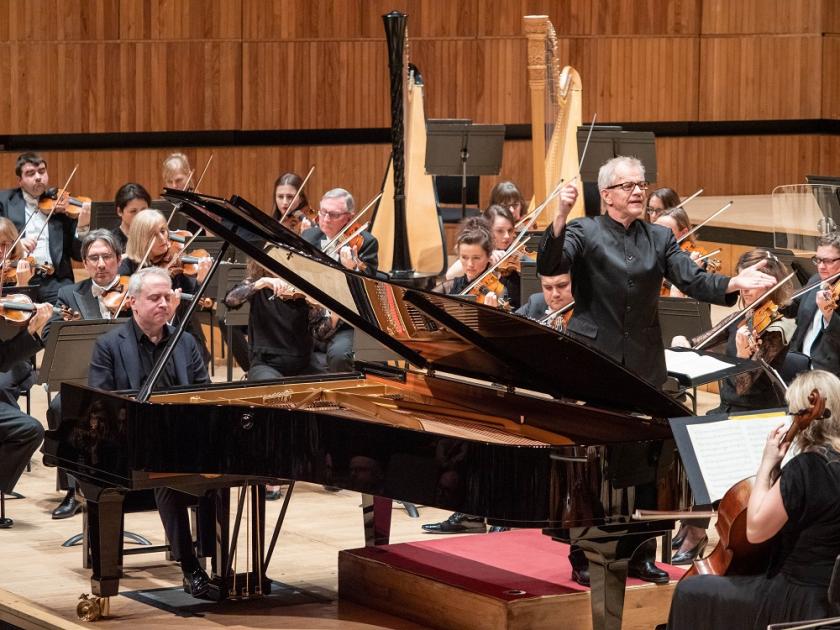Three works two centuries apart, two of them rarities, with 100/200 years between each: that's no guarantee for programming success, and no way to fill a hall (though the London Philharmonic Orchestra admin deserves a good medal for the intricacy of its “2020 Vision” series planning, linked to the Beethoven anniversary and explained by Gavin Dixon in his review of Vladimir Jurowski’s launch concert earlier this month).
There was even riveting restlessness where you might have expected fixity, in the 2005 contender, Penderecki’s Chaconne in memory of John Paul II (whom the composer knew as Karol Wojyla during the future Pope’s theatre days). A late addition to the ongoing project of his Polish Requiem, which started out as a single memorial movement dedicated to Lech Wałęsa in 1980 in memory of the workers killed a decade earlier at the Gdańsk shipyards, the variations on a descending bass quickly depart from the melodic baroque model, threatening fragmentation before the poised, poetic close with two brief solos for viola (Richard Waters) and cello (Kristine Blaumane, who also made her presence felt in Beethoven’s finale; the cellist with her colleagues and Vänskä in third photograph). The writing for strings is superb but tricky; the LPO players combined both atmosphere and focus.
I can only conclude that this singular road to Rome triggered Jeremy Denk’s wicked encore at the end of the first half, for symmetry’s sake – a paraphrase (not sure whose – his own?) on the Pilgrims’ Chorus from Wagner’s Tannhäuser which you knew was going to go wrong from its slightly off chords before it rocketed into a parallel homage to Tom Lehrer’s “Vatican Rag” (“2-4-6-8, time to transubstantiate”). Surely Denk could have sung as well as played that, too, since he’s consummate in reaching out to the audience.  He probably doesn’t know Eric Morecambe’s deadpan out-front eyebrow raisings, which made me want to laugh in the equivalent version here during the Beethoven concerto. But they were not out of place: Denk’s razor-sharp responses to his fellow players – and Vänskä is a master at working with soloists in concertos – had plenty of humour to them, laugh-out-loud funny in sudden flashes throughout the finale. The whole felt Mozartian: not in the pretty-rococo-image way, but as I want to hear the earlier composer – muscular, no slack, but with enough room for poetics. That was even true of the deadly-serious exchanges between Orpheus and the Furies which form such a unique centrepiece.
He probably doesn’t know Eric Morecambe’s deadpan out-front eyebrow raisings, which made me want to laugh in the equivalent version here during the Beethoven concerto. But they were not out of place: Denk’s razor-sharp responses to his fellow players – and Vänskä is a master at working with soloists in concertos – had plenty of humour to them, laugh-out-loud funny in sudden flashes throughout the finale. The whole felt Mozartian: not in the pretty-rococo-image way, but as I want to hear the earlier composer – muscular, no slack, but with enough room for poetics. That was even true of the deadly-serious exchanges between Orpheus and the Furies which form such a unique centrepiece.
The LPO already has form under Jurowski in the complexities of Romanian master Enescu – we won’t hear a more intricately jewelled interpretation of his great opera Oedipe, and it’s good news that Jurowski’s championship of the Third Symphony is returning later in this series. The First of 1905 may be late-romantic in its opulent scoring, but resolutely un-decadent. Enescu is absolutely his own man here: themes flash and disappear into the tapestry, definition in block chords is soon submerged in iridescent waters, little is easy to grasp yet everything enthrals, and Vänskä seemed hyper-alive to all the wonders.  It’s visual rather than cinematic music: an exotic garden rises from the gloomy vaults of a Maeterlinck castle in the central slow movement, which may be seeded by Wagner’s Tristan und Isolde but contains its own unique plant species. Even in the finale, which starts and ends like the first movement in brilliant E flat major assertiveness, strange woodwind tendrils pop out from the rock face when you least expect them. So unique was this glorious endgame that I wanted to hear it all over again: that’s the wonder of Enescu, and the LPO is now officially his greatest champion.
It’s visual rather than cinematic music: an exotic garden rises from the gloomy vaults of a Maeterlinck castle in the central slow movement, which may be seeded by Wagner’s Tristan und Isolde but contains its own unique plant species. Even in the finale, which starts and ends like the first movement in brilliant E flat major assertiveness, strange woodwind tendrils pop out from the rock face when you least expect them. So unique was this glorious endgame that I wanted to hear it all over again: that’s the wonder of Enescu, and the LPO is now officially his greatest champion.















Add comment